How sports complexes are using SaaS for dynamic pricing & revenue boosting
SaaS platforms reshape the revenue model of sports complexes by merging manual and automated systems.

Source: Pexels
Why are some sports complexes thriving while others struggle to fill time slots?
Top sports complexes leverage SaaS (software-as-a-service) solutions to set time-based prices, adhering to evolving market conditions and customer preferences. This results in a wider customer base and robust revenue.
Whether you manage a small or large sports complex, delivering tailored offers and assistance can become a hectic task. Implement SaaS solutions to optimize pricing and make data-driven decisions by identifying peak and lean periods for doing business.
In this article, we explore dynamic pricing by sports complexes and the role of SaaS in streamlining operations and unlocking new revenue opportunities. Read on.
Understanding dynamic pricing in sports
Dynamic pricing is a strategy to modify pricing models based on the analysis of customer behavior, event demand, weather, and buyer intent. This analysis adjusts prices in real-time for facilities like tennis courts, gyms, and yoga studios.

But why is it called “dynamic” pricing?
Because, unlike traditional systems, dynamic pricing allows prices to fluctuate until the game or event day. Current market conditions align with demand variations to understand the customers’ willingness to pay.
The key aspects of dynamic pricing include:
Adaptation: Following the market demand, prices increase during high-demand periods and decrease during low-demand times.
Technology: Prices are optimized by leveraging advanced algorithms and data analytics. The algorithm tracks competitor prices, customer behavior, and locations.
Flexibility: Real-time adjustments make dynamic pricing extremely flexible. For instance, you might purchase a ticket for a lower price, but last-minute buyers would have to pay a higher price. According to Amra Beganovich from Colorful Socks, “Our product prices change dynamically based on inventory size.”
The intersection of SaaS and dynamic pricing
Dynamic pricing intersects with SaaS through cloud-based tools to automate revenue management and real-time adjustments.
At Rezerv, we leverage our court booking software to assist sports complexes and businesses in setting dynamic pricing. For example, a tennis court drop-in might cost $50 in peak hours and $35 in non-peak hours. This ensures efficient resource management and transparency for customers who drop in to relieve stress year-round.
Let’s now understand how SaaS enables dynamic pricing.
How does SaaS facilitate dynamic pricing?
SaaS operates on cloud-based software that continuously gathers various datasets like past sales, ticket demand, multimedia data like images, audios and visuals, and other external factors to automate price modifications and bookings. The datasets are analyzed extensively through machine learning (ML) and statistical modeling algorithms, which reduces human intervention.
SaaS solutions can further predict seasonal sales, the number of participants, and sports performance.
The key features of SaaS platforms include:
1. Algorithmic pricing model
As discussed above, SaaS platforms leverage ML and statistical modeling to analyze demand fluctuations, competitor pricing, weather patterns, and purchasing behavior. This helps in setting competitive prices for maximum revenue and customer satisfaction.
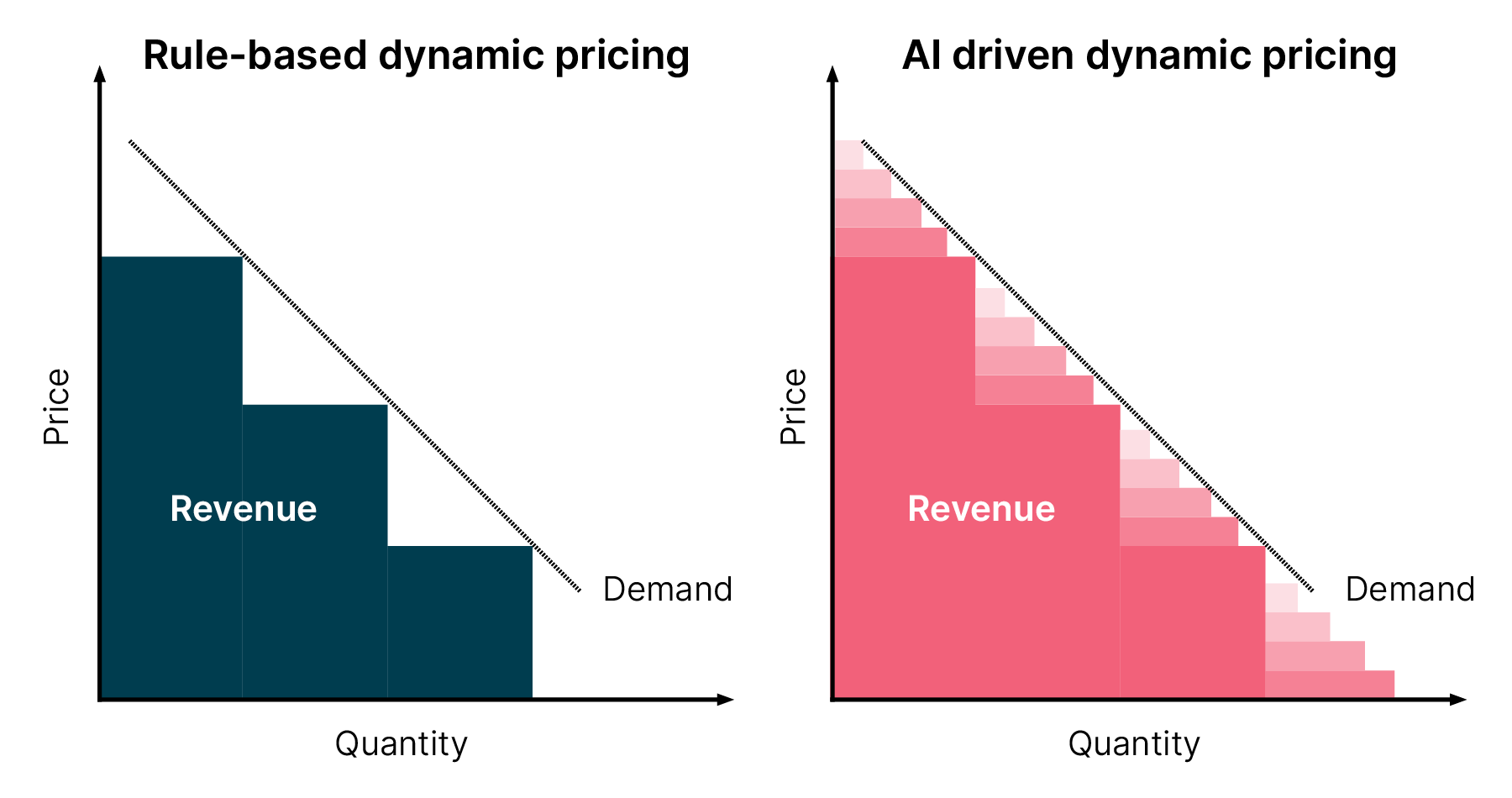
2. Market intelligence
SaaS algorithms work 24/7, eliminating scenarios of revenue leakage and underpricing. The primary aspect here is the automation of data collection and price optimization. SaaS solutions integrate with secondary market data to track past ticket prices with current resale prices.
This keeps your business competitive by responding proactively to sudden market changes and competitor actions.
3. Omni-channel presence
These platforms unify with CRM software to ensure consistent pricing across channels—company websites, emails, and third-party sales channels. You can even monitor the onboarding and spending frequency from an aggregated dashboard, enhancing transparency and access to actionable insights.
For example, check out our advanced dashboard, which facilitates efficient monitoring:
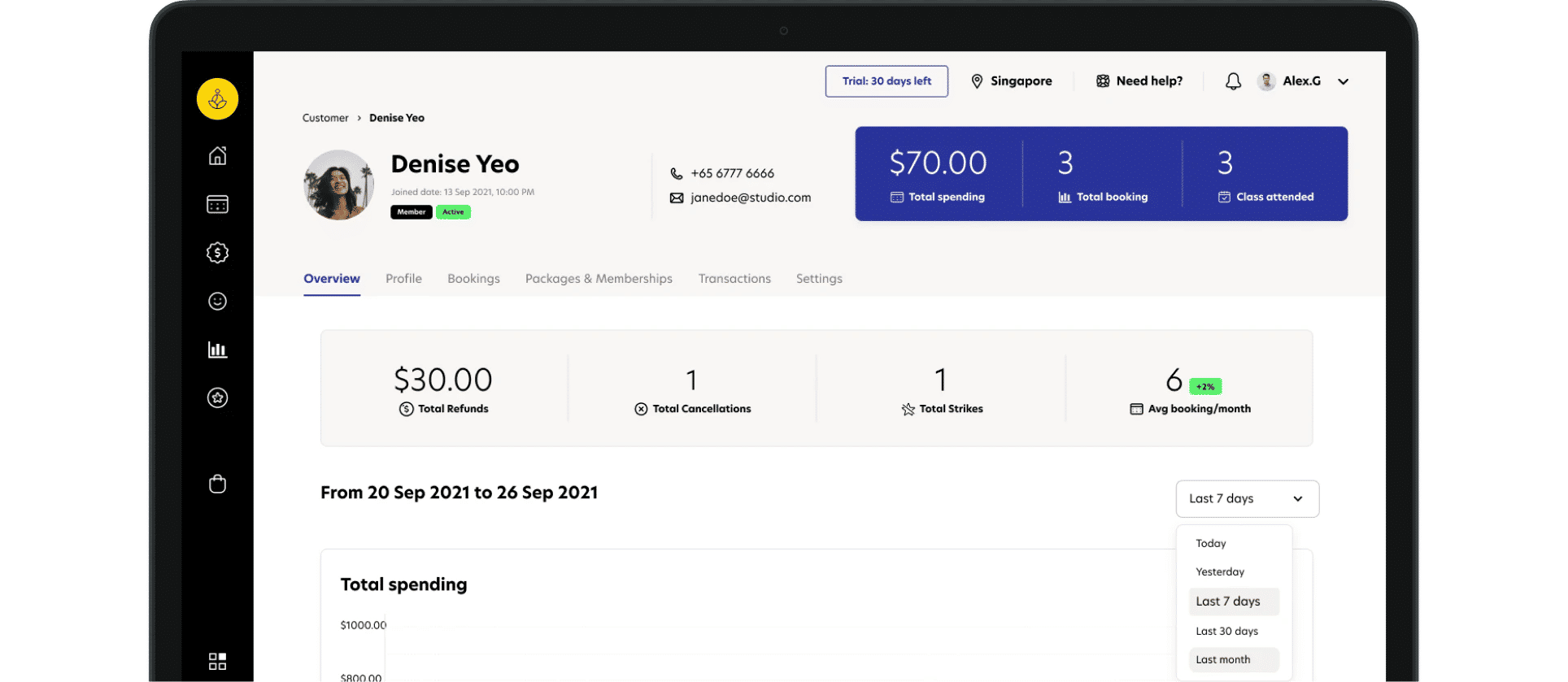
4. Segmentation
SaaS platforms track the demographic, purchase behavior, participation, and price sensitivity of existing customers to divide them into small groups based on their similarities. This streamlines personalization strategies like loyalty rewards, group-based discounts, and tailored offers.
Advantages over traditional systems
Traditional systems involve manual intervention in routine tasks and don’t provide price flexibility. Given its manual workforce, the processes are time-consuming and inefficient in analyzing vast market datasets.
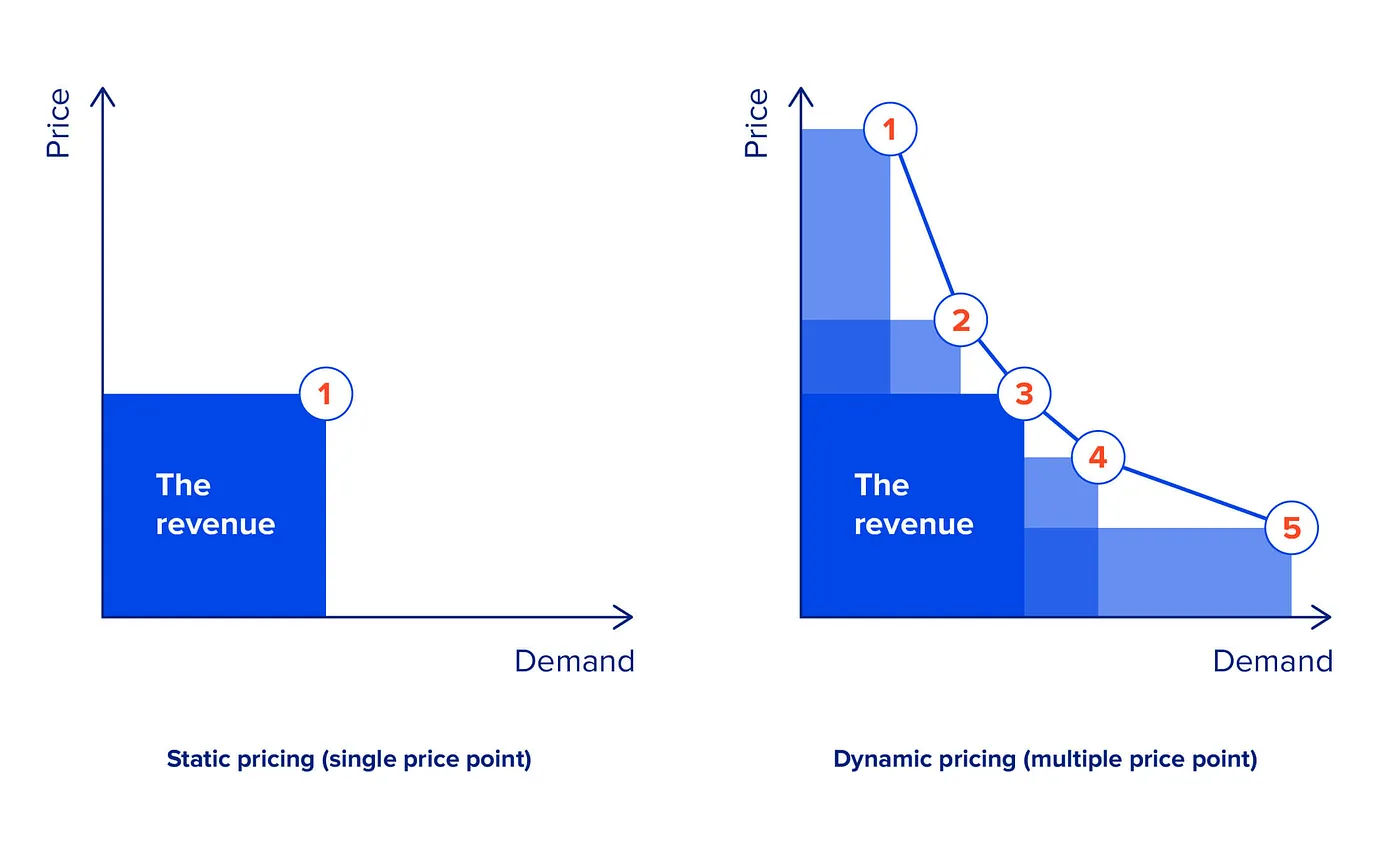
Unlike this, the intersection of dynamic pricing and SaaS triggers significant improvements. It makes pricing models responsive and revenue streams robust. Therefore, it offers a broad range of advantages over traditional systems.
The key advantages include:
Responsiveness: Advanced algorithms facilitate continuous and real-time price modification based on market data, economic shifts, and behavioral analysis.
Decision-making: The analysis of crucial datasets using subsets of AI provides deeper insights and prevents guesswork. It also assists sales teams in developing strategic revenue models.
Revenue optimization: Aligning market demand with customers’ willingness to pay reduces turnover rates and increases revenue.
Scalability: SaaS solutions generally operate on a subscription-based model or pay-as-you-go model. This enables you to onboard more customers, offer more services, and expand territory.
Implementation strategies for sports complexes

Introducing SaaS in your sports complex system is a structured process that mainly revolves around three elements:
1. Data collection and analysis
We know that data collection is an important factor in SaaS. But why is that?
1.1 Advanced analytics
The analyzed datasets are leveraged to conduct predictive analytics using AI algorithms. Through predictive analysis, the algorithm predicts future sales, price sensitivity, market trends, and peak times. It further initiates A/B testing to find out the best price and package. This predictive power is invaluable for a dropshipping business, enabling more accurate inventory planning and dynamic pricing adjustments.
1.2 Customer segmentation
Use SaaS solutions to examine:
- Customers’ age
- Occupation
- Interests
- Buying intent
Segment customers based on their distinct characteristics to foster smooth personalization of pricing strategies. SaaS application development plays a crucial role in creating these dynamic platforms that adapt to user needs and market trends .
1.3 24/7 monitoring
Implement aggregated dashboards and reporting tools to monitor performance shifts, weather changes, or unexpected demand spikes 24/7. This will ensure prompt adjustment of prices and offers to attract new customers.
For example, Rezerv goes beyond and provides you with market insights to enable you to sell:
- Private coaching sessions
- Group classes
- Courses
Our software not only fosters dynamic pricing but also assists you in staying ahead of the curve.
2. Integration with existing systems
SaaS solutions get easily integrated with existing systems. Here’s how you can do it:
2.1 Seamless integration
Choose a SaaS-based platform like Rezerv that easily integrates with existing ticketing systems, sales systems, and CRM tools. A smooth integration ensures consistent pricing across multiple channels and transparency with customers.
2.2 Secondary market data
SaaS platforms integrate with past (secondary) and current (primary) market data to provide a holistic opinion regarding vital changes. This ensures your business isn’t left behind and the complex facilities aren’t offered at unoptimized prices.
2.3 Operational integration
Dynamic pricing platforms often provide dashboards that integrate with existing business intelligence tools, allowing venue operators to monitor pricing performance, sales trends, and customer behavior in one place.
For example, some SaaS providers offer APIs to facilitate deep integration with existing systems. This results in automated workflows, scheduled price changes, and location-based triggers without manual intervention.
3. Staff training and change management
Staff require training to utilize dynamic pricing to its full potential.
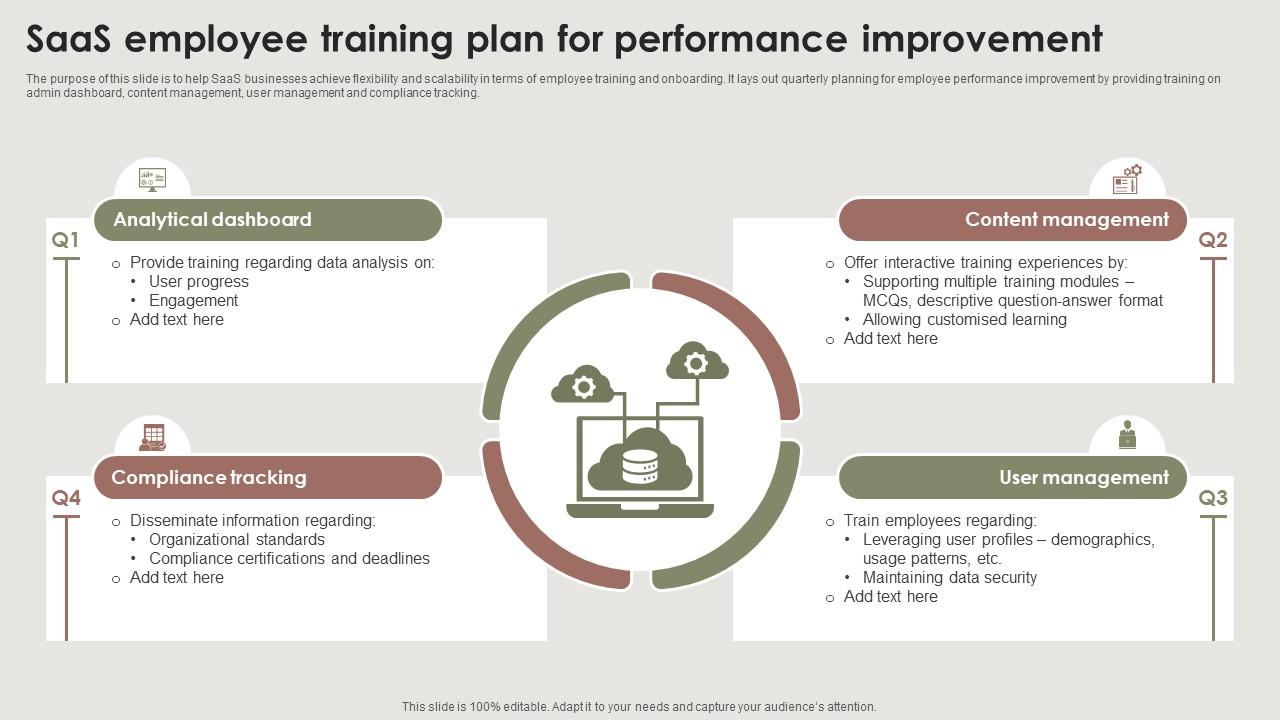
Consider the following factors:
3.1 Comprehensive education
Organize training programs for marketing, sales, and customer service teams to educate them about the principles of dynamic pricing. This will help them gain clarity about price fluctuations and market trends.
3.2 Introduction to SaaS tools
Since dynamic pricing is managed through SaaS platforms, staff should undergo training on how to use these modern systems effectively. This includes:
- Navigating dashboards
- Interpreting reports
- Setting pricing parameters
- Responding to system alerts or recommendations.
To keep the training process organized, companies can also use timesheet templates to log sessions and track progress as teams adapt to the new tools.
3.3 Communication skills
Communication is the cornerstone of sales, and teams must develop strong communication skills to explain dynamic pricing models. A well-informed staff with flawless communication can convert dissatisfied prospects into loyal customers.
Future outlook
The future of SaaS-powered dynamic pricing looks promising. Companies have started to realize the inefficiency of traditional systems, and this encourages them to embrace modern technological advancements.
AI and ML algorithms will enable more precise and autonomous decision-making by identifying strong data points in engagement patterns. This will include monitoring the users’ social media activities to understand their interests and preferences.
Some SaaS platforms offer appointment scheduling software, spot bookings, attendance tracking, website creation, and feedback analysis to improve customer satisfaction. For example, you can use our flexible website builder to create a branded booking website.

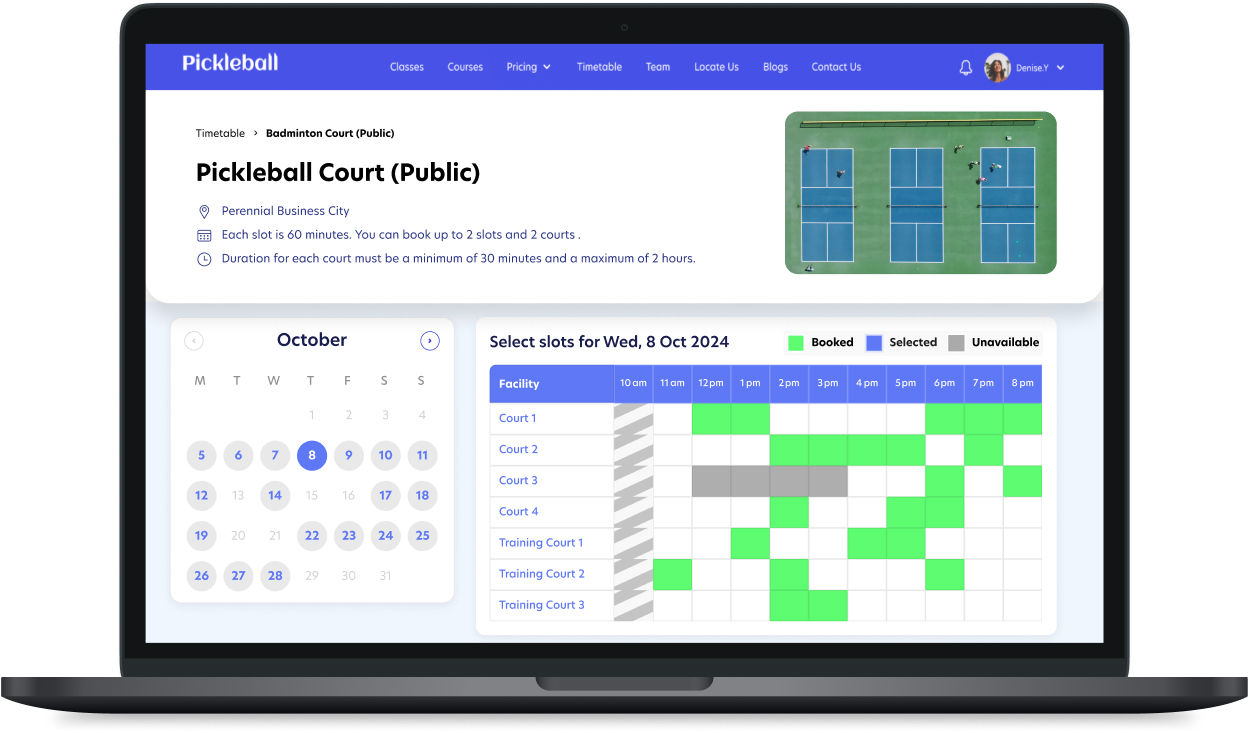
A deeper analysis unlocks broader opportunities for personalization. For example, based on the purchasing behavior—last-minute buyers, casual enrollments, and seasonal attendees, customers are segmented. This segmentation effectively improves targeted messaging and sends automated offers, reminders, and membership updates.
The implementation of AI-led SaaS has expanded globally (North America and Europe) in diverse sports disciplines. As the adoption rate of online bookings, purchases, and memberships increases, sports complexes and other entertainment venues will further integrate with SaaS to fuel their revenue.
Play smarter with SaaS
SaaS platforms reshape the revenue model of sports complexes by merging manual and automated systems. This merger introduces advanced algorithms and real-time analysis to promote dynamic pricing.
If you are a sports complex owner or a service-based company, you must integrate with SaaS solutions to predict market trends and unlock hidden revenue potential. The game is not only about maximizing profits, it’s about developing a future-ready revenue system.
Looking for a SaaS product to manage your business?
Visit Rezerv today and automate bookings, membership management, and website creation to supercharge your growth.
About the author:
Joy D'Cruz – a content marketing specialist currently working with SaSHunt. Joy has a keen interest in researching topics related to B2B and SaaS. During weekends, he enjoys spending time watching YouTube.
